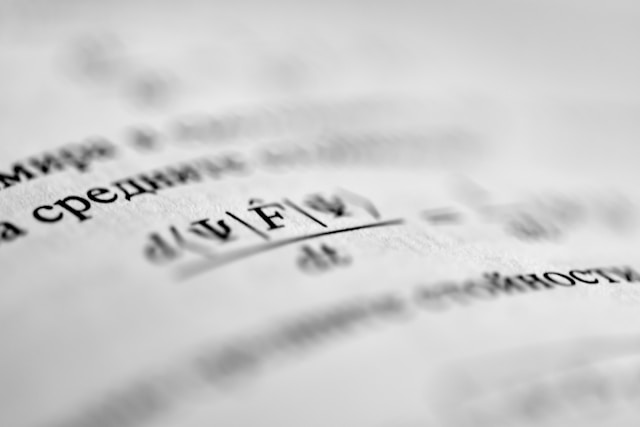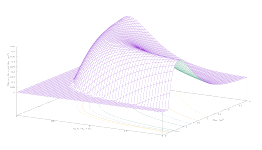
https://unsplash.com/photos/a-close-up-of-a-piece-of-paper-with-writing-on-it-zPymxeCnE1Y?utm_content=creditShareLink&utm_medium=referral&utm_source=unsplash
The Schrödinger equation
-\frac{\hbar}{i}\frac{\partial\Psi(x,t)}{\partial t}=-\frac{\hbar^2}{2m}\frac{\partial^{2}\Psi(x,t)}{\partial x^{2}}+V(x,t)\Psi(x,t)involves a state function \Psi wave function) which depends on spatial coordinates and time. For simplicity, let us consider the wave function for a particle in the one-dimensional case. Fortunately, for many applications of chemistry the time-independent Schrödinger equation, which gives rise to stationary states, is sufficient. In this article we will study the shape of the wave equation under these conditions.
We will look for the solutions of the Schrödinger equation written earlier that can be written in the form
\Psi(x,t)=f(t)\psi(x)
The derivatives of this solution are
\frac{\partial\Psi(x,t)}{\partial t}=\frac{df(t)}{dt}\psi(x)\\\frac{\partial^{2}\Psi(x,t)}{\partial x^{2}}=f(t)\frac{d^{2}\psi(x)}{dx^{2}}Substituting in the time-dependent Schrödinger equation we obtain
-\frac{\hbar}{i}\frac{df(t)}{dt}\psi(x)=-\frac{\hbar^{2}}{2m}f(t)\frac{d^{2}\psi(x)}{dx^{2}}+V(x)f(t)\psi(x)\\-\frac{\hbar}{i}\frac{1}{f(t)}\frac{df(t)}{dt}=-\frac{\hbar^{2}}{2m}\frac{1}{\psi(x)}\frac{d^{2}\psi(x)}{dx^{2}}+V(x)where we considered a stationary potential.
Since both members of the last equation depend exclusively on t and x respectively, they must be constant. Calling E this constant, we have, for the first member
\frac{df(t)}{f(t)}=-\frac{iE}{\hbar}dtBy integrating with respect to t, we get
\ln f(t)=-\frac{iEt}{\hbar}+Cwhere C is the integration constant. Therefore
f(t)=e^{C}e^{-iEt/\hbar}=Ae^{-iEt/\hbar}For the spatial part
-\frac{\hbar^{2}}{2m}\frac{d^{2}\psi(x)}{dx^{2}}+V(x)\psi(x)=E\psi(x)Reordering terms
\frac{d^{2}\psi(x)}{dx^{2}}+\frac{8\pi^{2}m}{\hbar^{2}}[E-V(x)]\psi(x)=0which is the time-independent Schrödinger equation for a simple particle of mass m moving in a potential field V(x) in one dimension. Hence, in the case of systems with a stationary potential, there are wave functions of the form
\Psi(x,t)=e^{-iEt(\hbar}\psi(x)The probability density is stationary, even using time dependent wave functions. Taking into account the definition of conjugate complex \Psi^*(x,t), we have
|\Psi(x,t)|^{2}=\Psi^{*}(x,t)\Psi(x,t)=e^{iEt(\hbar}\psi(x)e^{-iEt(\hbar}\psi(x)=|\psi(x)|^{2}





